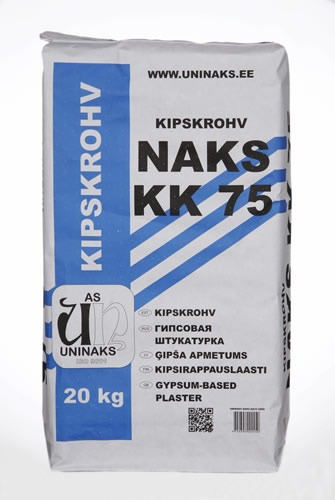Description
SAVIKROHV
CLAY PLASTER
For dry interior application
A plaster mix based on natural clay, sand and reinforcing fibre.
Properties are similar to the clay plaster used in Estonia for hundreds of years. Clay plaster is manufactured from white, green, beige or grey clay. Respective marking to be found on the bag.
APPLICATION AREA OF CLAY PLASTER
Can be used on surfaces made of various mineral construction materials. Also for levelling or plastering walls and ceilings made of wood, thatch mats and other similar materials.
For renovating all kinds of old plaster surfaces.
PLASTER BASE
The plaster base should be cleaned first. Remove loose dust, paint, tar, etc. When plastering on wood, use latching made of wood or other material. When working on unstable plaster base, be sure to use metal lathing.
PREPARATIONS
Pour water into a mixing vessel. Add required quantity of mix powder. winstrol oral Mix carefully with a mixer until the powder is completely wet. Add water until the viscosity of the mixture is suitable for application. Let stand for 30 min. and mix again.
Ready-made clay plaster is usable for several days.
APPLICATION
Clay plaster can be applied on the wall with a trowel. To cover bigger areas use a paste-spraying gun. Level with metal, plastic or wooden floats Levelled surfaces can be post-treated and the plaster surface can be given the required structure or shape.
Clay plaster hardens while drying. Thus do not apply thick plaster layers (over 10 mm) on the wall at the same time. Thick layers dry unevenly and cracks may develop in the plastered surface. Each following plaster layer shall be applied on the previous one a bit more thinly. Thereat please observe that the previous plaster surface must be absolutely dry. Surfaces covered by clay plaster can be refreshed and repaired by moisturising dry plaster surfaces.
SETTING
Setting time depends on the moisture content of the room and air temperature. Speeding up setting by using air blowers, lamps or other similar equipment may cause cracks in the plaster surface. It is recommended to use only natural products to paint or de-dust the hardened surfaces, which do not suppress the “living” properties of the plaster surface. It is important to preserve breathing and accumulation capability of the surface treated with clay plaster.
RESTRICTIONS
Clay plaster does not contain substances hazardous to human health. It is not necessary to use protection devices during application. Protect eyes from mechanical injuries.
When working with clay plaster the temperature of air and plaster base shall be over zero.
It is not recommended to use clay plaster in wet rooms or rooms with high air moisture content. Water on clay plaster softens plastered surfaces. Wet surfaces require drying.
STORAGE
Store bagged plaster powder in dry conditions.
There are no limitations to storage time.
CONSUMPTION
Overall plastering with 1 cm layer approximately 20-25 kg of clay plaster per m2 wall area.






